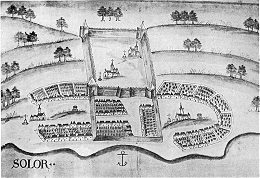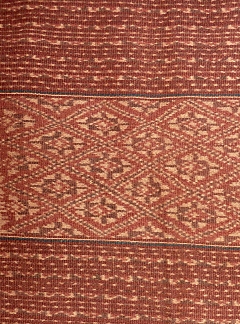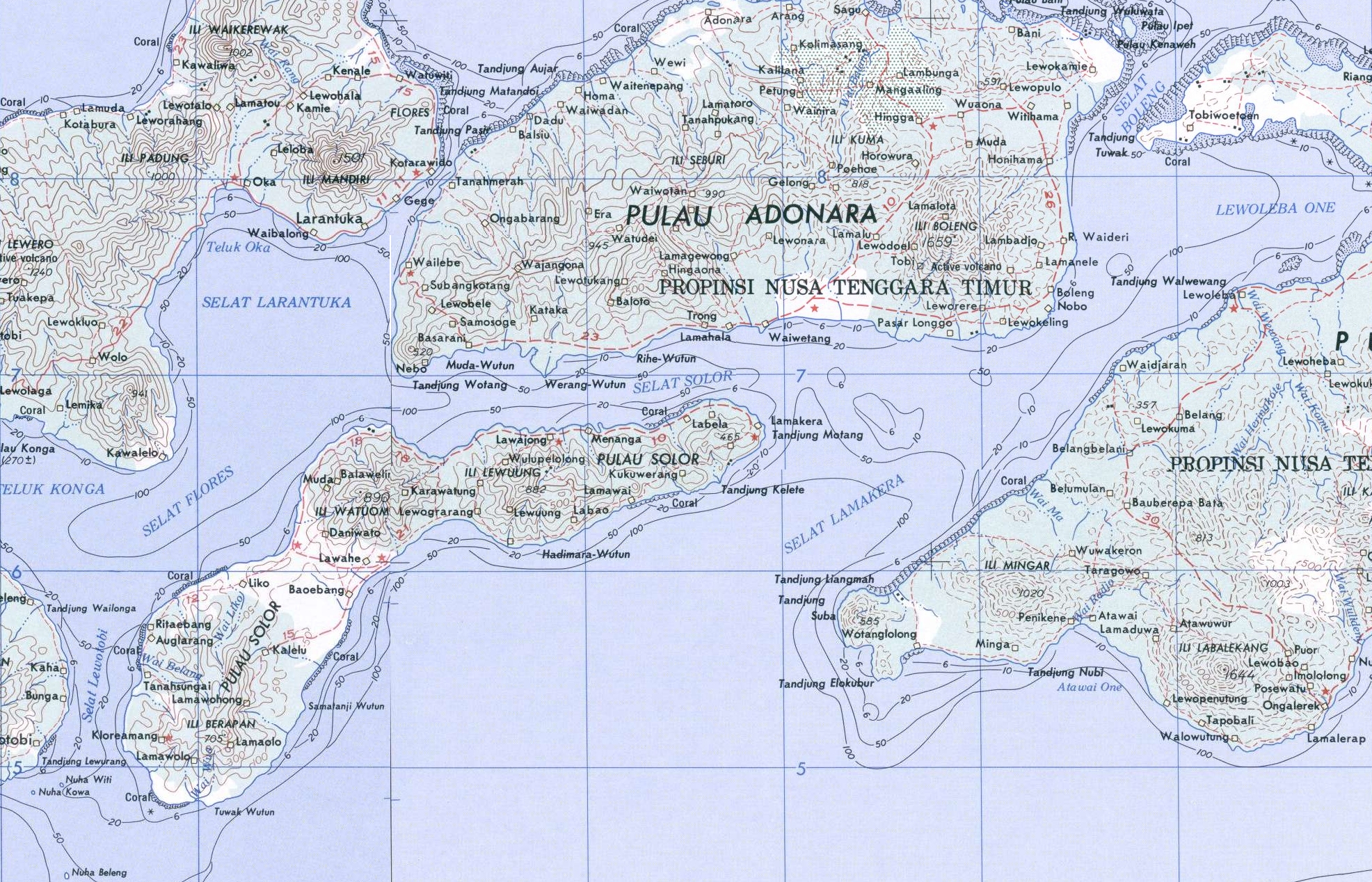Solor - a little known strongholdSolor is a small, dry, and largely infertile island lying between the islands of Flores to the west, Adonara to the north, and Lembata to the east. There is precious little information on the ikat textiles of Solor, or even about its culture and traditions in general. The book most frequently showing in Library Searches is Roy W. Hamilton's Gift of the Cotton Maiden, Textiles of Flores and the Solor Islands - probably mainly due to its title, because it actually has only one short chapter specifically on Solor, about a page and a half, in Ruth Barnes' article on the East Flores Regency. Ethnographic information is limited as well, and largely focused on the whale hunting community of Lamakera. Historical information on the other hand, is relatively plentiful as Solor played an important role in the colonial area, as a stronghold that helped first the Portuguese, then the Dutch to subdue the area around it. A history of military and missionary domination
The Jesuit priest Balthasar Dias who visited Solor in 1599, to his surprise found a mosque and quite a number of Muslims. In 1561 Portuguese Dominicans landed on the island and built themselves a palisade of lontar palm trunks to protect them from the Muslims. Two years later a Muslim fleet assumed to have come from Java attacked the palisade, but the sudden appearance of a Portuguese galleon saved the priests, a fortuitous coincidence that so impressed the islanders that they abandoned Islam and became Christian instead. In 1566 the palisade was replaced by a proper fort, and the Dominicans took up the Christianisation of the local population. By the end of the 16th C. the Christian population, including Portuguese settlers, numbered about 25,000. There were, however, repeated displays of resistance against both the Portuguese and their religion. This resistance was apparently both fierce and effective, as in 1598-'99 the Portuguese required an armada of no less than 90 ships to put down a Solorese uprising. The Dominicans too were a force to be reckoned with, and could be extremely tough to deal with. So tough, that about a decade later even the Portuguese traders had enough of their dominance, pulled out and established a new trading post at Larantuka on East Flores, just across the Flores Strait. When the Dutch first attacked the island in 1613, the Dominicans surrendered and were shipped off to Larantuka, establishing a stronghold for the church that still exists today. The diocese of Larantuka is - or was until recently - one of the most powerful organizations in the wider area, controlling shipping and much of the trade in the Solor Archipelago, notably the trade in copra. When we travelled in the area in the mid 1980s, the bishop's office was the go-to for place for cashing traveller's cheques, and gave the best black market rate on dollars. When they conquered Solor, the Dutch obviously took over the Portuguese fort, but it was abandoned following an earthquake in 1624, making their hold on the island rather more tenuous. After two of their commanders defected to the Portuguese they withdrew from the island, only to return with greater force in 1636 and take it back. The first of the new commanders was suspended, because he married an indigenous woman. The second commander challenged the Portuguese commander to a duel and was slain. In 1648 the Dutch left and the Dominican priests returned. With a sword in one hand and a bible in the other, the Portuguese Dominican missionaries controlled the area till Dutch Jesuits and Franciscans arrived between 1860 and 1880. As a result of all this power-preaching, the majority of the Solorese are Christian - at least nominally - though in some coastal communities Islam has made inroads. People of SolorThe inhabitants of Solor belong to the Lamaholot linguistic and ethnic grouping. They share many cultural traditions with inhabitants from other islands in the archipelago and with those of the eastern tip of Flores. They practice subsistence agriculture and fishing - whale hunting being the mainstay of life in Lamakera - and engage in some marginal trading. The island has few natural resources and poverty is endemic.
Ikat textiles of SolorIkat textiles from Solor are rare - some types very rare. Most western museums have only a few specimens, if any. The cloths tend to be relatively simple, compared to those of other islands in the archipelago, and certainly compared to those of Flores, just across the narrow Flores Strait. Most of the cloths appear to be less ambitious versions of Flores textiles. The sarongs for mundane use tend to have an indigo background, and are decorated with a few stripes or narrow bands with ikated motifs.The most common type of sarong on Solor is mostly plain, adorned with a few ikated stripes. A second type of Solor sarong with decoration in ikat technique, the kewatek makasar, has more ikated stripes, usually arranged in a few bands, and was destined for more or less formal occasions, such as churchgoing. The third type are ikat sarongs that serve as bridewealth cloth. In most of Solor the design is decorated with motifs that vaguely recall patola patterns, and cover the entire field. The coloration is dominated by morinda red, mean, and the cloth is called after this colour, kewatek mean. According to Ruth Barnes it is mandatory that it contain sections in the very dark tone, nearly black, obtained by overdyeing of indigo with morinda red, a process in Lamaholot called belapit. In some, the belapit may be applied sparingly, as in the cloth depicted here that we believe to be a kewatek mean, where it appears that only a few spots and some stripes have been overdyed. A fourth type of Solor ikat cloths are the bridewealth sarongs from the Tanah Lein region on the south coast (also referred to as Tanalein; not shown on map below). The people of Tanah Lein and surrounding villages adhere to archaic traditions, apparently resistent to the wave of patola imitation that washed over the archipelago for centuries. They have a black or dark indigo background, with narrow stripes in red and/or other colors, and broader bands with ikat decoration near the extremities. These are called kewatek kemeta. As in Eastern Flores, the way a sarong is worn indicates the age and therefore status of the wearer: young unmarried women wear them with a string around the neck, young married women pull them up over their breasts, mature women roll them down to the waist. | ||||||||||||





